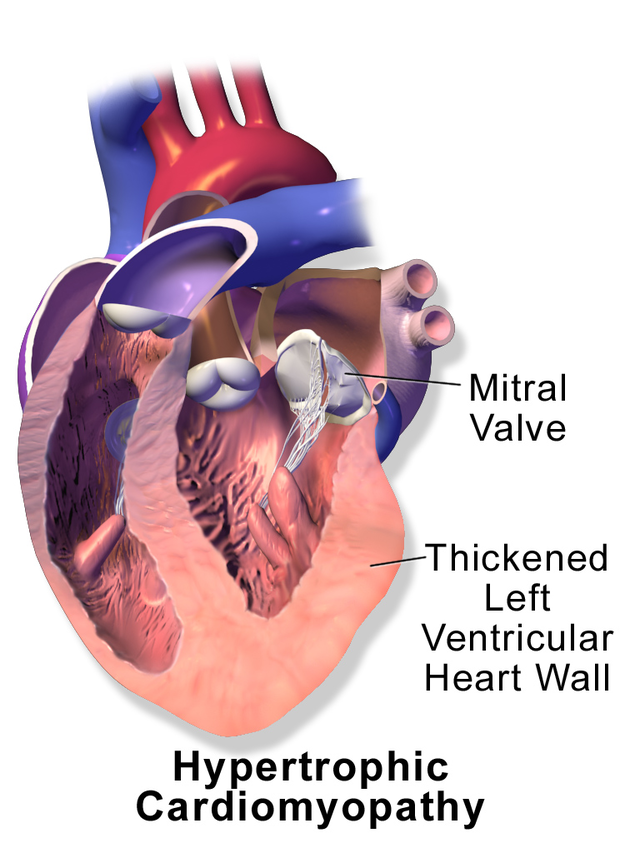Mitralstenose
Begutachtet von Dr. Adrian Bonsall, MBBSZuletzt aktualisiert von Dr. Colin Tidy, MRCGPZuletzt aktualisiert am 1. August 2017
Erfüllt die Anforderungen des Patienten redaktionelle Richtlinien
- HerunterladenHerunterladen
- Teilen Sie
- Sprache
- Diskussion
In this series:Heart valve diseaseMitral regurgitationAortic stenosisAortic regurgitationInfective endocarditis
Diese Seite ist archiviert worden.
Sie wurde in letzter Zeit nicht überarbeitet und ist nicht auf dem neuesten Stand. Externe Links und Verweise funktionieren möglicherweise nicht mehr.
Mitralstenose bedeutet, dass sich die Mitralklappe beim Öffnen nicht vollständig öffnet. Die Öffnung ist daher schmaler als normal (stenosiert).
In diesem Artikel:
Anmerkung der Redaktion
Dr Sarah Jarvis, 27th November 2021
NICE guidance on heart valve disease
This leaflet has been archived and has not been reviewed since 2017. It does not include the latest guidance on investigations and treatments for mitral stenosis, which were produced by the National Institute for Health and Care Excellence (NICE) in November 2021.
You can find out more about NICE's recommendations from the further reading section at the end of this leaflet.
The mitral valve is a heart valve that lies between the left atrium and left ventricle. The valve has two flaps (cusps). The valve allows blood to flow into the left ventricle when the left atrium squeezes (contracts). When the left ventricle contracts, the valve closes and the blood flows out through the aortic valve into the aorta. (The aorta is the main artery which takes blood to the body.)
The cusps are stopped from turning inside out by thin strands of tissue called chordae. The chordae anchor the cusps to the inside wall of the ventricle. The valve or chordae may get damaged or scarred which can prevent the valve from working properly. This can lead to disorders called mitral stenosis, mitral regurgitation, or both.
Mitral stenosis means that when the mitral valve opens, it does not open fully. The opening is therefore narrower than normal (stenosed). So, there is some restriction of blood flow from the left atrium to the left ventricle. This in turn means there is a reduced amount of blood that is pumped out into the body from the left ventricle. In general, the more narrowed the valve, the less blood can get through and the more severe the problem is likely to be.
Lesen Sie unten weiter
Symptome
If the valve is only mildly narrowed (stenosed) you may have no symptoms or problems. If the stenosis is more severe, the symptoms may include:
Shortness of breath, especially with activity or when you lie down
Swollen ankles (oedema)
The heart - mitral valve stenosis

Behandlung
Medikation
Mild cases may not require any regular medication. Although medicines cannot correct a narrowed (stenosed) mitral valve, some medicines may be prescribed to help ease symptoms, or to help prevent complications - for example, angiotensin-converting enzyme (ACE) inhibitors, 'water tablets' (diuretics) and anticoagulation medication. If you develop atrial fibrillation, several medicines can be used to slow the heart rate down.
Chirurgische Behandlung
Surgical treatment is needed in more severe cases. There are various options, depending of the exact site and severity of the stenosis.
Stretching the stenosed valve
This is a procedure that does not involve open heart surgery. It is called percutaneous balloon commissurotomy or balloon valvuloplasty. (It is called a commissurotomy, as the area where the valve flaps (cusps) come into contact with each other are known as the commissures.)
It is done by inserting a thin tube called a catheter through the skin (percutaneous) into the main blood vessel in the top of the leg. The catheter is passed up to the heart. The tip of the catheter is placed in the mitral valve opening. A balloon at the tip of the catheter is then inflated to stretch the narrowed valve. This is often successful in widening the narrowed valve.
Valve repair is possible in some cases
This is called mitral commissurotomy or mitral valvotomy. This is usually done by open heart surgery. Basically, the edges (commissures) of valve cusps that have become scarred and fused are shaved back to widen the narrowed valve opening.
Valve replacement is needed in some cases
This may be with a mechanical or a tissue valve.
Mechanical valves are made of materials which are not likely to react with your body (for example, those made from titanium), although they can produce a noise which can be heard outside the body.
Tissue valves are made from treated animal tissue (for example, valves from a pig).
If you need surgery, a surgeon will advise on which is the best option for your situation.
Lesen Sie unten weiter
What is the outlook for people with mitral stenosis?
In some cases, the disorder is mild and causes no symptoms. If you develop symptoms they tend to become gradually worse over the years. However, the speed of decline can vary. It often takes years for symptoms to become serious. Medication can ease symptoms but cannot reverse a narrowed (stenosed) valve.
Surgical treatments have greatly improved the outlook (prognosis) for most people with more severe stenosis. Surgery has a very good success rate. However, as with all surgical procedures and operations, there is some risk involved when you have surgery. Complications due to surgery occur in a small number of cases.
Patienten wählen aus für Herzkrankheiten

Herzgesundheit und Blutgefäße
Herzklappenerkrankung
Herzklappen sitzen zwischen den Herzkammern und steuern den Blutfluss durch das Herz. Es gibt vier häufige Arten von Herzklappenproblemen - Mitralstenose, Mitralinsuffizienz, Aortenstenose und Aorteninsuffizienz. Die Broschüre "Anatomie des Herzens" enthält Einzelheiten über die Funktion des Herzens und die Art und Weise, wie das Herz schlägt.
von Dr. Philippa Vincent, MRCGP

Herzgesundheit und Blutgefäße
Hypertrophe Kardiomyopathie
Bei der hypertrophen Kardiomyopathie verdickt sich der Herzmuskel in Teilen des Herzens (Hypertrophie). Bei einem normalen Herzen sind die Muskelzellen regelmäßig und strukturiert. Bei der hypertrophen Kardiomyopathie werden die Zellen des Herzmuskels unregelmäßig und ungeordnet.
von Dr. Colin Tidy, MRCGP
Weiterführende Literatur und Referenzen
- Prophylaxe gegen infektiöse Endokarditis: Antimikrobielle Prophylaxe gegen infektiöse Endokarditis bei Erwachsenen und Kindern, die sich interventionellen Verfahren unterziehenNICE Clinical Guideline (März 2008 - zuletzt aktualisiert im Juli 2016)
- 2023 ESC-Leitlinien für die Behandlung der infektiösen EndokarditisEuropäische Gesellschaft für Kardiologie (Aug 2023)
- Nishimura RA, Otto CM, Bonow RO, et al2017 AHA/ACC Focused Update of the 2014 AHA/ACC Guideline for the Management of Patients With Valvular Heart Disease. Circulation. 2017; CIR.0000000000000503. Ursprünglich veröffentlicht am 15. März 2017.
- Vahanian A und andereLeitlinien für das Management von Herzklappenerkrankungen: The Task Force on the Management of Valvular Heart Disease of the European Society of Cardiology, 2017
- Özkan MWas ist neu in den ACC/AHA-Leitlinien für Herzklappenerkrankungen 2017. Anatol J Cardiol. 2017 Jun;17(6):421-422. doi: 10.14744/AnatolJCardiol.2017.7925.
- Herzklappenerkrankungen bei Erwachsenen: Untersuchung und BehandlungNICE-Leitlinie (November 2021)
Lesen Sie unten weiter
Artikel Geschichte
Die Informationen auf dieser Seite wurden von qualifizierten Klinikern verfasst und von Fachleuten geprüft.
1 Aug 2017 | Neueste Version

Fragen, teilen, verbinden.
Stöbern Sie in Diskussionen, stellen Sie Fragen, und tauschen Sie Erfahrungen zu Hunderten von Gesundheitsthemen aus.

Fühlen Sie sich unwohl?
Beurteilen Sie Ihre Symptome online und kostenlos
Sign up to the Patient newsletter
Your weekly dose of clear, trustworthy health advice - written to help you feel informed, confident and in control.
By subscribing you accept our Privacy Policy. You can unsubscribe at any time. We never sell your data.